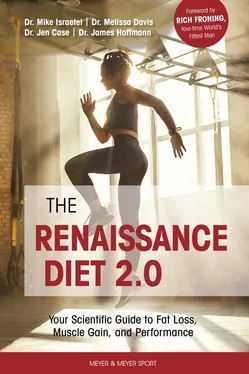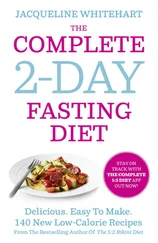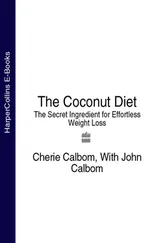Intra-training meals should provide immediately available energy during the workout itself. Lower glycemic index carbohydrate sources increase chances of gastrointestinal discomfort and cause more blood to be allocated to the digestive tract and away from working muscles, so should be avoided entirely. Quickly digested liquids are easier to consume during training than solids, so the best recommendation for intra-workout is a high glycemic index liquid such as a sugary sports drink.
In hours immediately following training, the body is particularly efficient in its ability to resynthesize glycogen from ingested carbohydrates. This is notable not only for single training sessions, but particularly when dealing with multiple training sessions per day, as glycogen resynthesis can be a rate-limiting step in subsequent exercise performance. For this reason, it is beneficial to bias post-training carbs toward higher glycemic index sources with minimal fiber and fat. Kids’ cereal in whey protein or fat-free milk is a great option here. Thanks to the training stimulus after a workout, your body can utilize more carbs in a shorter time span to refill glycogen stores. In this instance there is little concern about fat storage–as there might be if you were slamming Lucky Charms after spending a day sedentary on the couch. As the post-workout window stretches out, the sensitivity of the muscles to carbs declines, and previous meals have already done much of the glycogen filling. The rate of glycogen filling is no longer an immediate concern. Thus, the later it is after training, the food sources should have a lower glycemic index and the more added fiber and fats they can contain.
Meal Interval Considerations
Lower glycemic index foods and the additions of fiber, protein, and fat sources can slow digestion and better provide energy across longer intervals between meals. If you have a five-hour window between meals and need to concentrate at work, a meal of chicken, veggies, whole-grain bread, and nut butter would provide the sustained energy needed before your next meal, whereas gummy worms and whey protein shakes would likely leave you hypoglycemic after just a couple hours. Adjusting food composition for slower digestion is like creating a sustained release system for energy and should be considered when designing meals with different inter-meal intervals.
Glycemic Index Values and Real-World Eating
Popular opinion would have you believe that highly glycemic foods cause excessive insulin secretion thereby making you fatter. While there is a seed of truth to this claim, it is not consistently true, and unwanted fat gain is not always the result. Some foods with low glycemic index values cause high amounts of insulin to be secreted. A perfect example is skim milk and lean yogurt products; despite inducing significant insulin secretion, heavy consumption of these products is inversely associated with obesity. This means that people who eat lean dairy products are less likely to be obese. Carrots are another example; they have a relatively high glycemic index value, but their consumption is not generally associated with obesity. While high glycemic foods can make people want to eat more, cravings are actually more dependent on how satiating a food is, irrespective of glycemic index values. White potatoes are very glycemic but are extremely filling and so do not tend to increase cravings. Glycemic indices are not of themselves a measure of how healthy a given food item is or is not. Carb sources are generally consumed within a meal containing other foods; estimating glycemic index values for mixed meals is very difficult, and the value for any given mixed meal will be lower than any of its ingredients alone. Author Mike Israetel’s middle school physical education teacher, with the best of intentions, instructed students not to eat candy bars before sports games because the sugar would “burn up quickly and have them crashing” midway through the event. In reality, Snickers bars or any other chocolate-based candy bar have glycemic indices of around 50, similar to whole grains. The fructose in high fructose corn syrup is extremely slow digesting, and the high fat content of such candy decreases its glycemic index even more. When protein, fat, and fiber are involved in real meals people actually eat, the glycemic index value becomes just a very small factor in a bigger equation in which macro amounts, calories, and actual digestion times play a more dominant role. That being said, high glycemic carbs, eaten alone without other foods to slow their digestion, serve a valuable purpose in intra- and post-training meals, improving health and fitness outcomes in that context.
Carbohydrate Source Micronutrient Density
Along with factors affecting digestion time, the density of micronutrients within a carbohydrate source also define its compositional quality. Carbohydrate sources vary greatly in their micronutrient and phytochemical content. For example, dextrose powder can provide all needed carbs, but without any vitamins, minerals, phytochemicals, or fiber. Extreme diets that cut carbs very low for long periods (e.g., ketogenic diets) might elevate the risk of nutrient deficiencies. Getting carbs from a wide range of veggies, fruits, whole grains along with less nutrient-dense sources as needed allows you to get all the carbs you need and consume digestion speed-appropriate carbs without missing out on any nutrients.
The quality of a fat source is determined based on the class of fat. Each of the four main classes of dietary fat has its own effects on body composition, performance, and general long-term health.
Monounsaturated fats are found in plant sources, such as olive oil, canola oil, avocados, and a variety of nuts. This fat type not only promotes better health than others, but also, to some extent, supports leaner, more muscular physiques. Fat in any diet focused on health, performance or body composition should come primarily from monounsaturated sources.
Polyunsaturated fats can be found in certain vegetable oils, such as canola oil and safflower oil; walnuts; many fatty seeds; and some animal products like fatty fish and grass-fed animal meat. The most nutritionally relevant are the essential fats, Omega-6 and Omega-3 fatty acids. In most modern diets, Omega-6 fats are consumed in sufficient quantities, but Omega-3 fats are often under-eaten. This means that those training for high levels of fitness might need to supplement Omega-3 fats or tailor their diet especially for these fats. A diet relatively high in polyunsaturated fats supports performance well and is relatively neutral for general health.
Saturated fats come mainly from animal sources, such as dairy, eggs, meats, and coconut oils. Opinion on saturated fat has swung from recommended consumption of steak and eggs prior to marathons in the 1970s, to its demonization in the 80s and 90s, and back to an overemphasis on its consumption in the 2000s with bacon-and-heavy-cream-based, low-carb diets. Today, if we look at the data on saturated fat and health as a whole, they suggest that too much saturated fat can have a negative impact on health. On the other hand, saturated fat might have a positive effect on anabolic hormone levels for those interested in physique and sport performance. More data is needed for saturated fat recommendations in terms of potential physique benefits, but health detriments currently support limiting saturated fat intake.
Читать дальше












